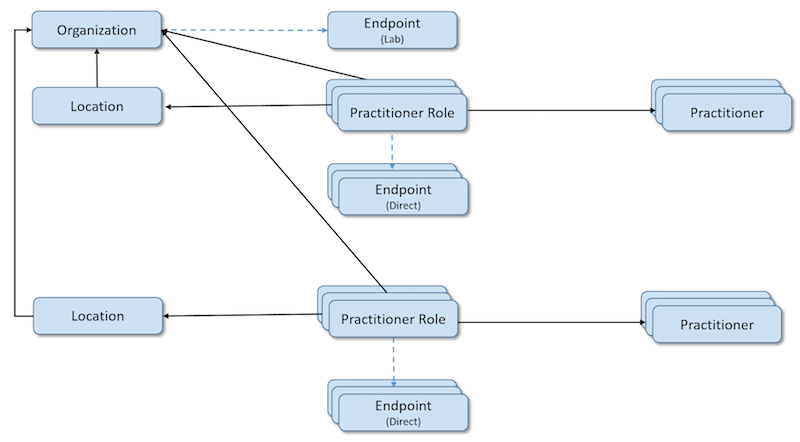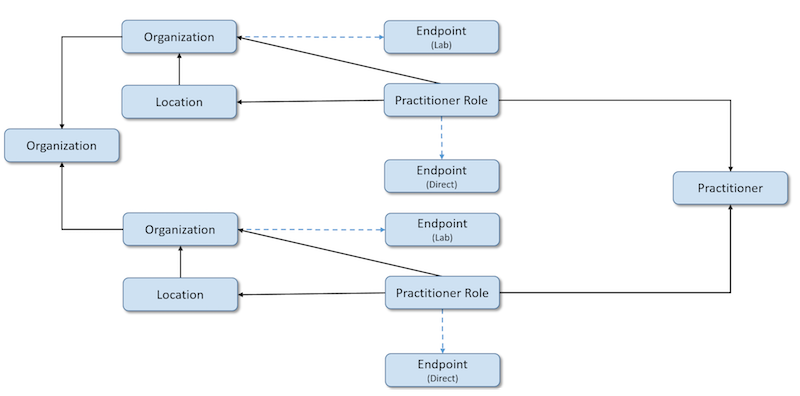This page is part of the Argonaut Provider Directory Guide (v1.0.0: Release) based on FHIR R3. This is the current published version. For a full list of available versions, see the Directory of published versions 
This section provides specific guidance for implementing the Argonaut Provider Directory guide. The conformance verbs used are defined in FHIR Conformance Rules.
This IG describes the basic resources and required elements to form a robust Provider Directory. During the development of the guide, the team discussed the relationships between resources and drafted several diagrams. Figure 1 is a basic diagram of single provider practice. The Practitioner has an Endpoint for Direct messaging, and the Organization has a Lab Endpoint for results.

Figure 2 represents a single practitioner working at multiple locations with different parent organizations. The Practitioner has an Endpoint, Direct address, at each Organization. The separate Organizations have their own Endpoints for Lab results.

Figure 3 represents multiple practitioners practicing at multiple locations within a single Organization. The Practitioner has an Endpoint, Direct address, at each Organization.

Figure 4 adds a parent organization to Figure 2. The single parent organization presides over the two sub-organizations and does not have a Location.

The Organization Resource ties Locations and Practitioners to the business entities.
How does the organization resource interact with location resource?
The Location resource identifies the type of services available at a specific Location. The Location resource only allows a single address.
How does a client know if it has a department organization resource vs a top-level organization?
Figure 6 gives an example of a Health System with multiple organizations. It does not cover Affiliate relationships since additional work is required.

The FHIR STU3 includes an example Organization hierarchy.
FHIR supports a full location hierarchy to describe departments, rooms, beds, and other locations. Location hierarchies are important for local exchange and may be relevant for a Provider Directory. For location hierarchies, see the FHIR STU3 example Location hierarchy. The finer granularity of facility structure is important for interorganizational exchange. The Argonaut Provider Directory guide focused on interorganizational exchange and provider relationships to those organizations.